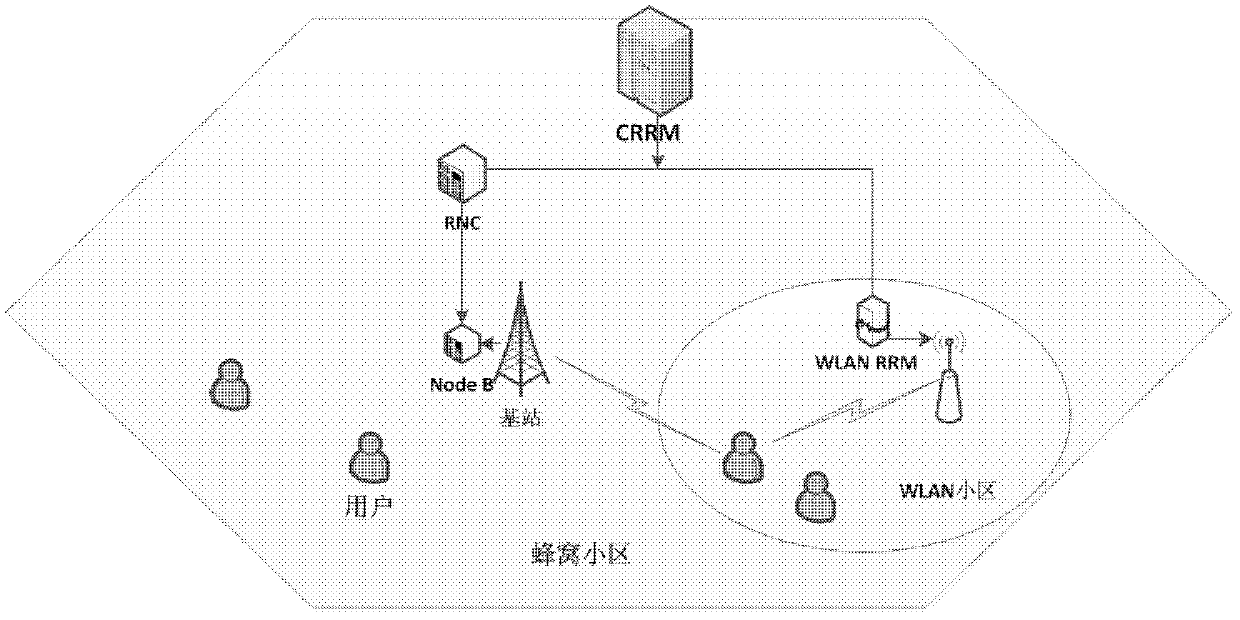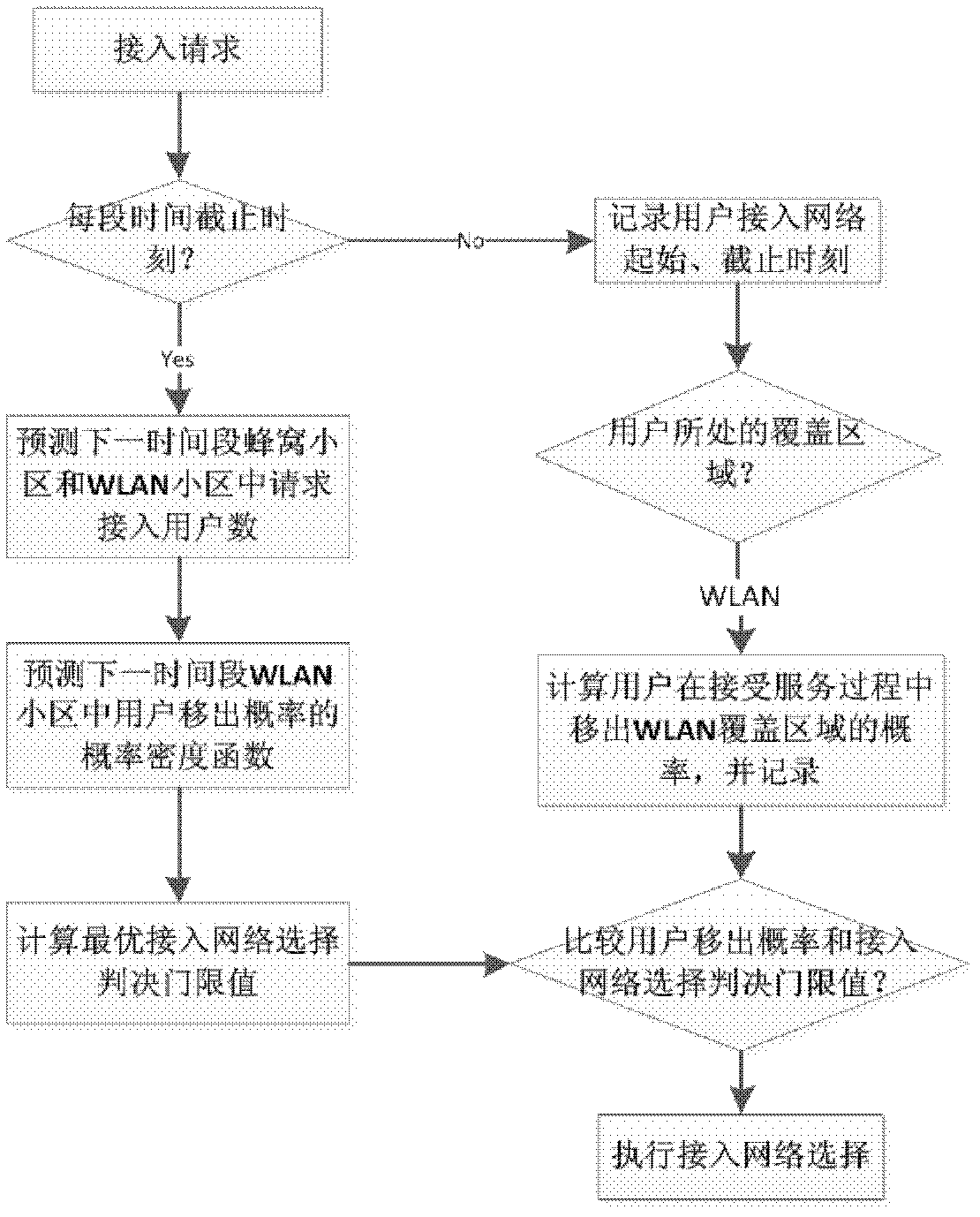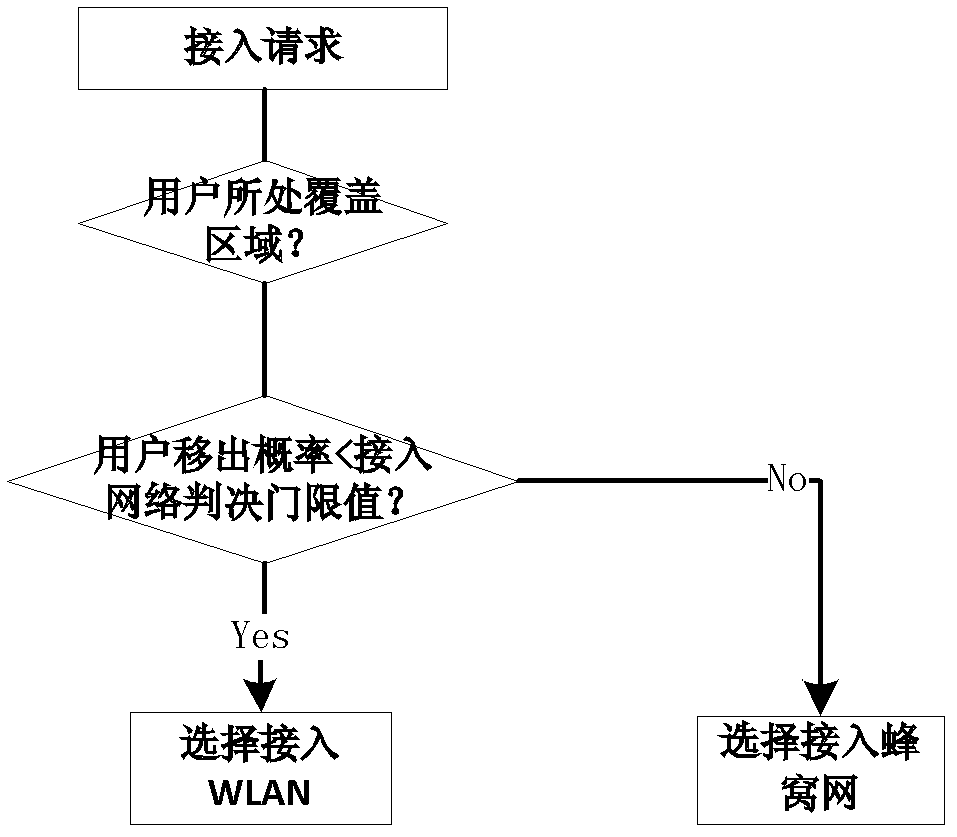Recognition-based access network selecting method
An access network and network technology, applied in the field of cognition-based access network selection, can solve problems such as unreasonable utilization of network resources, lower satisfaction, and failure to consider user mobility in WLAN networks, etc., and achieve new call blocking probability Reduce, reduce the number of switching between networks, the effect of fully and reasonably utilizing network resources
- Summary
- Abstract
- Description
- Claims
- Application Information
AI Technical Summary
Problems solved by technology
Method used
Image
Examples
Embodiment Construction
[0034] Below by accompanying drawing and embodiment, technical solution of the present invention is described in further detail:
[0035] The present invention is suitable for figure 1 In the scenario shown, the scenario includes two different access networks, the cellular network and the WLAN network. In the scenario, the general radio resource management module CRRM is responsible for coordinating radio resource management among different access networks in the network, including the access network mentioned in the present invention. Enter the network selection module.
[0036] refer to figure 2 , the present invention utilizes figure 1 In the scenario shown, the implementation steps for access network selection are as follows:
[0037] Step 1, perception of network environment information;
[0038] 1.1) Divide the time axis of the cellular network and the WLAN network into equal time periods of length T. In this example, T=600s, but not limited to 600s,
[0039]1.2) W...
PUM
 Login to View More
Login to View More Abstract
Description
Claims
Application Information
 Login to View More
Login to View More - R&D
- Intellectual Property
- Life Sciences
- Materials
- Tech Scout
- Unparalleled Data Quality
- Higher Quality Content
- 60% Fewer Hallucinations
Browse by: Latest US Patents, China's latest patents, Technical Efficacy Thesaurus, Application Domain, Technology Topic, Popular Technical Reports.
© 2025 PatSnap. All rights reserved.Legal|Privacy policy|Modern Slavery Act Transparency Statement|Sitemap|About US| Contact US: help@patsnap.com



